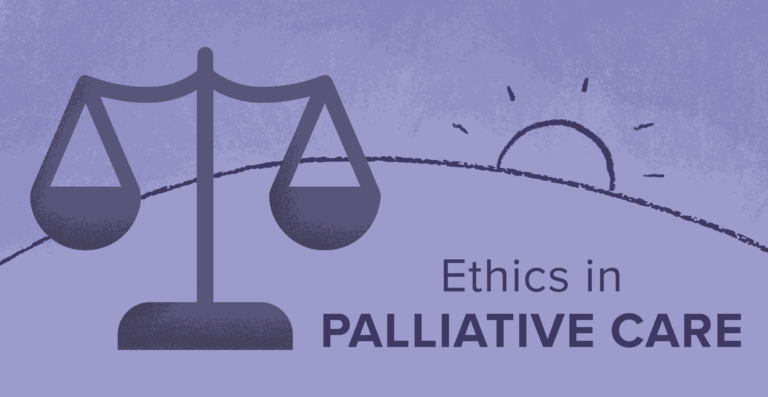If you’ve been assigned to care for a terminally-ill patient, you may have to contend with some difficult situations. Instead of doing everything you can to treat a patient, palliative care typically means relieving the patient’s symptoms and helping them feel as comfortable as possible towards the end of their life. It may be challenging for you and your colleagues to watch a patient die, but you must follow the patient’s wishes even if it means refusing treatment. Learn more about the ethics of palliative care and your role as a caregiver during these difficult times.
The Ethics of Medicine
The ethics of medicine have been around since the 19th Century, guiding healthcare professionals through uncertain, strenuous situations.
-
- Autonomy – patient has the right to choose or refuse the treatment
-
- Beneficence – acting in the best interest of the patient
-
- Non-maleficence – first, do no harm
-
- Justice – ensuring the equal distribution of health resources
-
- Dignity – the patient and the persons treating the patient have the right to dignity
-
- Truthfulness and honesty – being open and honest with patient, so they have all the information they need to make an informed decision
Keep these ethical principles in mind as you provide palliative care.
Keeping the Patient and Their Loved Ones in the Know
Rolling veins are sure to throw any IV newbie for a loop. New nurses and students tend to be a bit timid when trying to insert a needle into a patient’s vein. The fear of getting it wrong can be overwhelming in some individuals, especially when the person’s veins keep moving from side to side. To make sure you land on your feet, it’s best to roll the vein into the needle. Position the needle to the side of the person’s vein, insert the catheter just past the bevel and release the vein. It should land right under the needle for a hassle-free IV.
Keeping the Patient and Their Loved Ones in the Know
Based on the principles mentioned above, it’s your job as a healthcare provider to help the patient make an informed decision. You should present them with all possible treatment options, the risks and benefits of each, as well as the option of refusing care all together, what it means, and the impact it would have on the end of their life.
If a patient is mentally unstable or too ill to make the decision for themselves, their loved ones will need to step in to make the decision. You should be open and honest with the patient’s loved ones and they come to terms with the situation at hand and choose the best option for their family.
Giving the Patient the Freedom to Choose
Some patients with a terminal disease like cancer may wish to forgo treatment, including often painful, unpleasant treatment methods like chemotherapy, in favor of making the most of their final days. While this may be a difficult decision, all you can do is present the facts and let the patient or their loved ones choose for themselves.
You shouldn’t pressure or manipulate the conversation in any way. Even if you have your own opinion on the matter, take a step back and give the patient and their family some space to make up their minds.
If a patient or their loved ones refuses treatment, walk them through how you plan on making the patient feel more comfortable and what their final days might look like. Death is always a painful subject to broach, but it may be the only option in some situations.
Palliative care can be challenging for healthcare providers. If you’re new to this environment, speak to your manager or colleagues and ask for some advice. In most cases, it’s all about relieving the patient’s pain and managing their symptoms as they approach the end of their life.
Sources:
